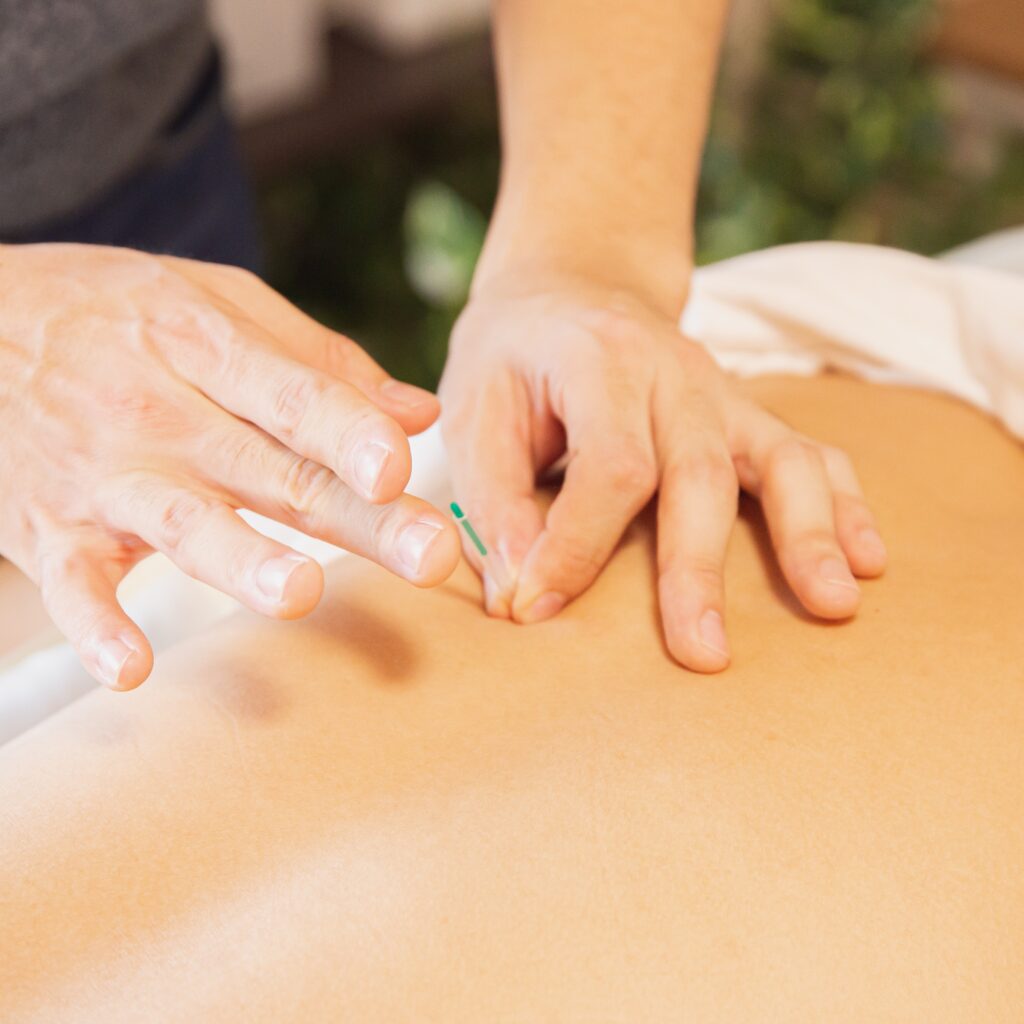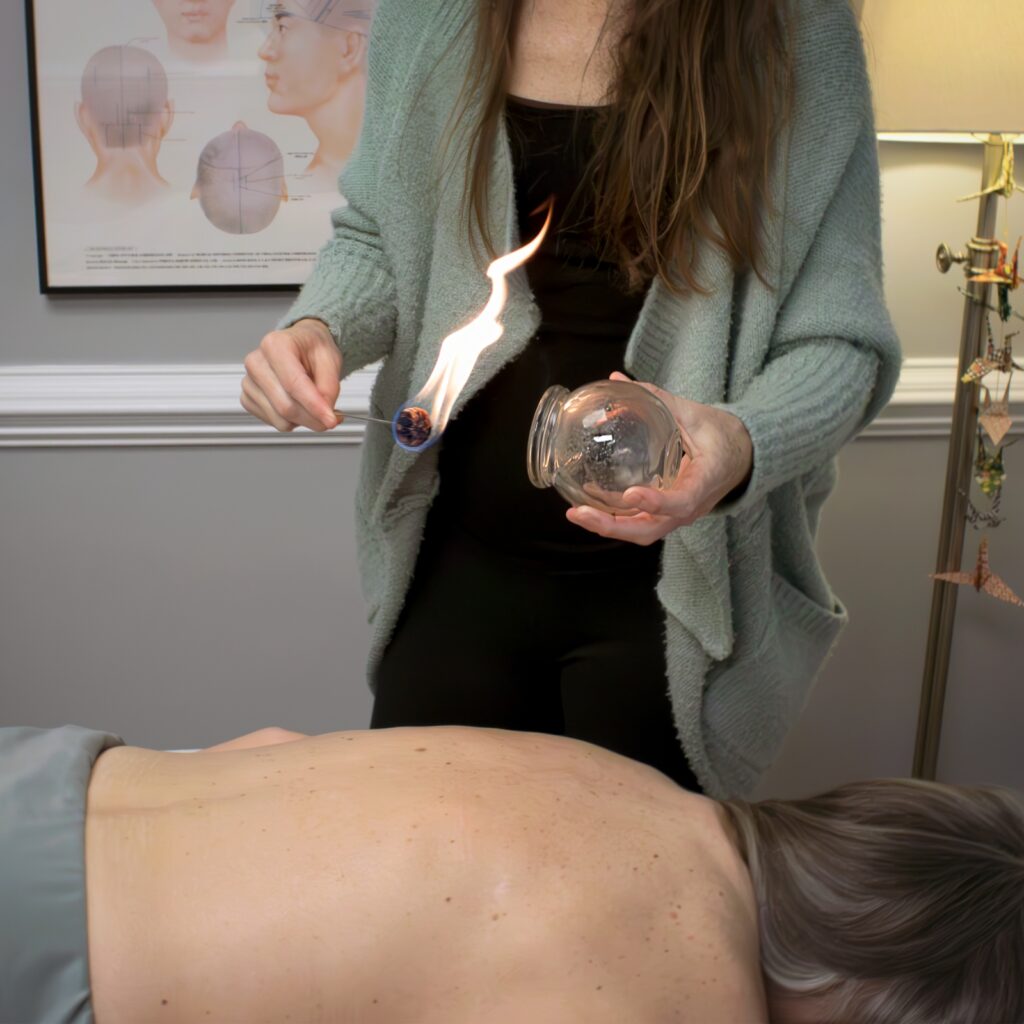Some people may be hesitant to try acupuncture at first, simply because of the needles (spoiler alert: acupuncture is painless!), but there are so many benefits to acupuncture that you’re missing out on if you haven’t tried it yet. With a 2,000+ year track record of fixing the root causes of diseases (as opposed to just the symptoms), there’s no wonder why so many people receive acupuncture. From chronic pain to infertility to looking younger, there are so many reasons why you might want to receive acupuncture.
What Is Acupuncture?

Acupuncture is one element of Traditional Chinese Medicine (TCM) that consists of carefully placing ultra-fine, sterile needles into the skin at strategic locations of the body called acu-points. These acu-points stimulate your central nervous system and activate your qi to release natural chemicals to promote stress and pain relief.
Want to learn some fun facts about Acupuncture? Check out our infographic here!
What Are the Benefits of Acupuncture?
Practitioners of Traditional Chinese Medicine aim to naturally correct imbalances in the body and educate patients on how to maintain results, long-term, through healthy nutrition and lifestyle changes. Receiving regular acupuncture treatments can help reduce stress and chronic pain, as well as prevent new health concerns from taking over.
Acupuncture is FDA approved and the World Health Organization (WHO) recognizes the effectiveness of acupuncture and TCM in treating over 40 common health issues, including, but not limited to:
- Colds, flus, sinusitis, asthma, allergies
- Irritable bowel, colitis, food allergies, nausea, gas/bloating, IBD
- Hypertension, high cholesterol, diabetes, circulation problems
- Infertility, menstrual pain/irregularity, PMS, menopausal symptoms, GYN problems, pregnancy support
- Back and neck pain, sciatica, TMJ, carpal tunnel, arthritis, fibromyalgia, and various other pain syndromes
- Depression, anxiety, insomnia, headaches, migraines, dizziness, tinnitus, post-stroke paralysis
- Weight loss and addictions recovery
Struggling with chronic pain? Learn how acupuncture can help.
How Much Does Acupuncture Cost?
Private Consultation and Treatment
Initial Appointment: $125
Follow-Up Visit: $90*
Same Week Follow-Up: $65
Children (Ages 12 and Under)
Initial Visit: $95
Follow-Up: $70
Package Pricing
Buy 5 acupuncture sessions, get one half off.
Buy 10 acupuncture sessions, get one free.
Ready to start feeling healthier? Contact us today to book your consultation!
Want to know how to prepare for your acupuncture treatment? Check out our infographic on how to maximize the benefits of acupuncture.
*Note: We offer a $5 discount for cash/check payment. We are not in-network with any insurance providers. If your insurance offers an out-of-network acupuncture benefit, you will still pay upfront and we can process universal healthcare forms for you to send to your insurance for reimbursement.
Treatment Enhancements (Included in Price)
Celluma Light Therapy ($10 add on fee) – an FDA-cleared, non-invasive treatment that harnesses specific wavelengths of LED light energy to enhance cellular health. This therapy accelerates the healing and regeneration of compromised tissue cells, making it highly effective for managing pain, improving skin conditions, and even promoting hair restoration. Its unique design ensures optimal energy absorption, delivering safe and remarkable results for a variety of health and cosmetic concerns. Learn more about Celluma Light Therapy here.
Cupping (or fire cupping) – a form of traditional medicine found in several cultures. It involves placing glass, plastic, or bamboo cups on the skin by creating a heat vacuum. It is used to relieve what is called “stagnation” in TCM terms and is used in the treatment of respiratory diseases such as:
- The common cold
- Pneumonia
- Bronchitis
Cupping is also used to treat back, neck, shoulder, and other musculoskeletal pain. The same redness or bruising as seen with gua sha may occur.

Gua Sha – involves repeated pressured strokes over lubricated skin with a smooth edge. Commonly a ceramic Chinese soup spoon was used, or a well-worn coin, water buffalo horn, or jade. This causes extravasation of blood from the peripheral capillaries and may result in subcutaneous blemishing, which usually takes 2-4 days to fade. The color of the sha rash varies according to the severity of the patient’s blood stasis – which may correlate with the nature, severity, and type of their disorder – appearing from a dark blue-black to a light pink, but is most often a shade of red. Despite appearances, marks on the skin look painful but are not. Patients typically feel an immediate change and sense of relief.
Moxibustion – an OM therapy utilizing moxa, or mugwort herb. It plays an important role in the traditional medical systems of China, Japan, Korea, Vietnam, Tibet, and Mongolia. Suppliers usually age the mugwort and grind it up to a fluff. Practitioners then burn the fluff or process it further into a stick that resembles a (non-smokable) cigar. They can use it indirectly, with acupuncture needles, or sometimes burn it on a patient’s skin.

Shiatsu – a traditional hands-on therapy originating in Japan. It comes from the Japanese words shi meaning “finger” and atsu meaning “pressure”. Pressure is applied with fingers and palms to particular sections on the surface of the body for the purpose of correcting the imbalances of the body and for maintaining and promoting health. It is also a method contributing to the healing of specific illnesses.
Tui Na – a series of pressing, tapping, and kneading with palms, fingertips, knuckles, or implements that help the body to remove blockages along energy meridians and stimulates the flow of qi and blood to promote healing. It means “push-grasp” or “poke-pinch” in Chinese. Tui na’s massage-like techniques range from light stroking to deep-tissue work, which would be considered too vigorous or painful for a relaxing massage. Clinical practitioners often use liniment, plasters, herbal compresses, and heat packs. In China, Tui na practitioners may also perform chiropractic-type adjustments.
